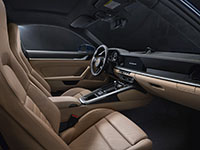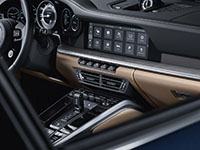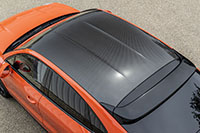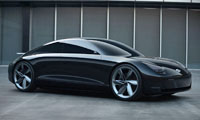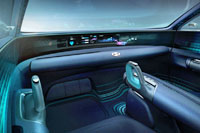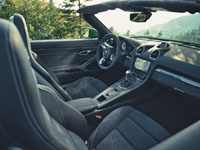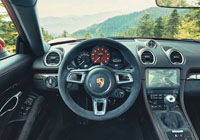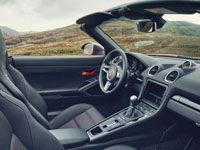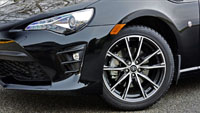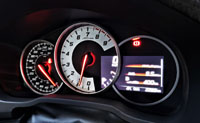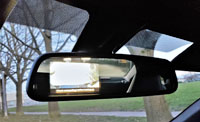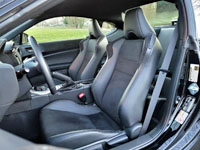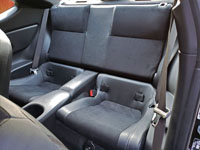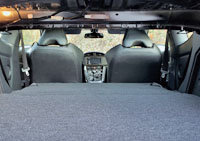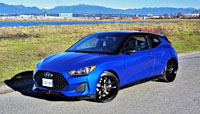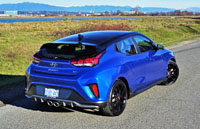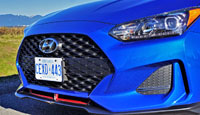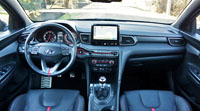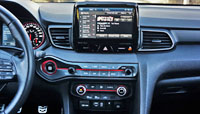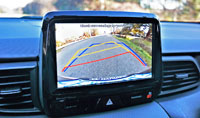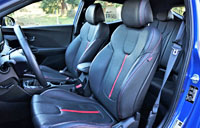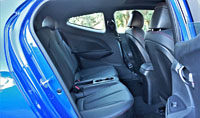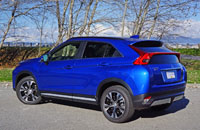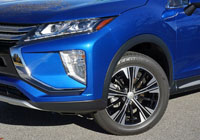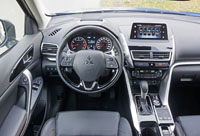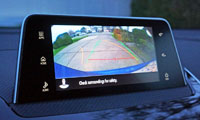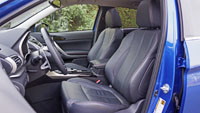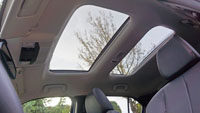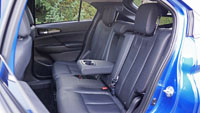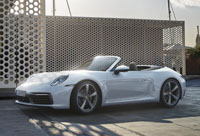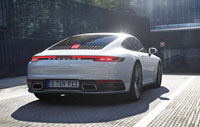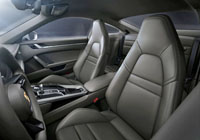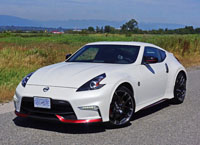
Seen the new Z yet? The Z Proto (photo below) was introduced just a month ago, and while it might not yet be in full production trim, the car’s amazing attention to detail, particularly inside, makes it look very close to reality. So, where does that leave the current 370Z?
Let’s just call it a modern-day classic to be nice. Today’s Z is in fact the oldest generation of any car currently on the market, having been with us for over 11 years. The only non-commercial vehicle to beat that seasoned tenure is Nissan’s own Frontier pickup truck with 16 years to its credit, while GM’s full-size Chevy Express and GMC Savana commercial cargo/passenger vans are oldest of all, having dawned in 1995 and been refreshed in 2003. While old doesn’t necessarily mean bad, much has been learned in the decades that have passed, and therefore each could certainly be a lot better.
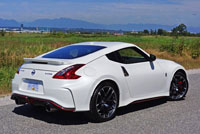
On the positive, this is the Z car’s 50th anniversary, and while I wish I had a special 50th Anniversary model to show you, complete with big, bold, diagonal side stripes, the Nismo is the best of the 2020 370Z crop, so I can hardly complain. To be clear, the anniversary car doesn’t provide the Nismo’s 18 additional horsepower and 6 extra pound-feet of torque, being limited to 332 and 270 respectively, instead of 350 and 276, but you can get it with the available paddle-shift actuated seven-speed automatic, the Nismo only available with a six-speed manual. Then again, it could be considered a moral crime to purchase the most potent version of this car with an autobox anyway.

Under the 370Z’s aluminum hood is a 3.7-litre V6 with a sensational looking red engine cover and an equally exciting reinforced three-point front strut tower brace hovering over top. Nissan should rightly celebrate this potent and dependable six-cylinder mill, and fortunately has provided an engine bay worthy of exposure at weekend parking lot car enthusiast meet-and-greets.
It doesn’t cost a lot to do it right, by the way, the base 370Z coming in at just $30,498, which is a hair over the much less powerful Toyota 86. Rather than get pulled into a comparison, which is oh-so easy with these two, I need to quickly point out that no amount of OEM options or packages can push the little Toyota sport coupe’s price up to my 370Z Nismo’s $48,998 MSRP.

For that money the 2020 Z gets some unique red and black trim accents around the its circumference, plus really attractive 19-inch Nismo Rays forged rims surrounded by a set of 245/40YR19 front and 285/35YR19 rear Dunlop SP Sport MAXX GT600 performance rubber, not to mention a Nismo-tuned suspension featuring increased spring, dampening and stabilizer rates, front and rear performance shocks, a rear underbody V-brace, and the reinforced three-point front strut tower brace noted a moment ago. Oh, and that engine sends its wasted gas through a Nismo-tuned free-flow dual exhaust system with an H-pipe configuration.

As awesome as all that sounds, the 370Z Nismo’s black leather and perforated red Alcantara Recaro sport seats will probably get noticed first, especially because of the racing-style five-point harness slots on their backrests. There’s no shortage of red thread around the cabin either, and special Nismo logos elsewhere, such as the gauge cluster.
Plenty of comfort and convenience features get pulled up from lower trims, too, a few worth mentioning including automatic on/off HID headlights, LED daytime running lights, LED tail lamps, proximity-sensing entry with push-button start and stop, an auto-dimming rear-view mirror that houses a tiny reverse monitor for the backup camera, a HomeLink garage door opener, micro-filtered single-zone automatic climate control, a navigation system with detailed mapping and SiriusXM NavTraffic capability, a great sounding Bose audio system with available satellite radio, a USB charging port, etcetera.

If we put age aside, this 2020 370Z Nismo looks like an excellent value proposition. After all, when compared directly to key rivals from Toyota, the fully-loaded $34,450 86 GT only makes 205 horsepower on its best day, while the 382-horsepower turbocharged BMW 3.0-litre inline-six-powered Supra (I’d love to be living with that car out of warranty, not) will set you back a cool $67,690. Certainly, you can get a BMW-sourced 2.0-litre turbo four in the new Supra instead, but even that 255-hp mill is much pricier than the Z at $56,390.
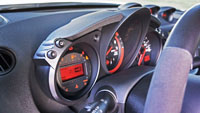
The top-line Supra can be launched from standstill to 100 km/h in the low to mid four-second range, which is a considerable improvement over the 370Z Nismo’s high four-second to low five-second sprint time. The 86 hits 100 km/h in the mid seven-second range, and tops out at just 226 km/h (140 mph), not that any sane person would ever try that on a Canadian road. Still, bragging rights are bragging rights, allowing owners of straight-six-powered Supras to boast about its 263 km/h (163 mph) terminal velocity, which is plenty of fun until the guy standing in front of his 370Z Nismo at the aforementioned meet-and-greet mentions his comparatively geriatric rival maxes out at 286 km/h (178 mph), a whopping 23 km/h (15 mph) faster.
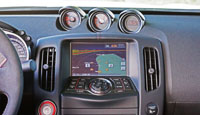
Of course, it’s not all about straight-line power. Anyone who’s spent time in a fast car knows that braking performance matters a lot more than acceleration, but don’t worry, Nissan has stopping power covered too. Up front, 14- by 1.3-inch vented rotors get the bite from four-piston opposed aluminum calipers, while the 13.8- by 0.8-inch rear discs are bound via two-piston calipers. Zs also receive high-rigidity brake hoses and R35 Special II brake fluid. The brakes are so strong, in fact, that I recommend doing so in a straight line when needing to scrub speed off quickly, because the Z’s 1,581 kilograms (3,486 lbs) of heft has been known to make its rear end a bit squirrely when getting hard on the binders mid-corner. I’ve experienced this myself, one time becoming especially uncomfortable just ahead Laguna Seca’s famed Corkscrew, and you don’t want to enter that one sideways.

Fortunately, getting out of trouble fast is Z car hallmark, the current 370’s double-wishbone front suspension and four-link rear setup being wonderfully balanced most of the time. It gets stiffer roll calibrations and increased damping levels in Nismo trim, plus a 0.6-inch wider track, yet drives quite smoothly nonetheless. All Z’s utilize a carbon-fibre driveshaft to shave off pounds and improve throttle response, plus a viscous limited slip differential for putting power down to the ground via both rear tires.
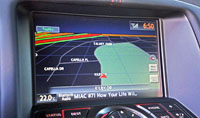
If you think all of this sounds good, and it should, wait until you’ve downshifted with the Z’s SynchroRev Match equipped six-speed manual that automatically blips the throttle mid-shift to match the upcoming gear ratio. You’ll be sounding like you’re a pro at heel-toe shifting, when you might not even know what I’m talking about. More importantly, SynchroRev Match ideally makes sure that shifts transition smoothly, thus minimizing drivetrain jolt. The shifter feels great too, thanks to a nice and tight, notchy feel and engaging response, while the clutch take-up is smooth yet engaging, and the arrangement of all aluminum pedals is great for the aforementioned heel-toe technique.
As you might expect in a modern sports car, there’s much more aluminum to go around than just the foot pedals, with plenty of bright and brushed metalwork elsewhere in the cabin. Then again, calling the Z a modern sports car is giving it much more respect than it deserves, particularly with respect to the interior’s design and execution. Its red on black colour theme is nice enough, but even this top-tier Nismo variant almost makes the 86 seem fresh.
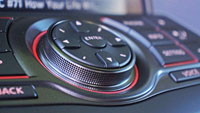
Don’t get me wrong, because the Alcantara seat and door inserts are pretty plush, as are the same faux-suede armrests and lower centre stack sides, not to mention the nicely padded stitched leatherette dash top and door uppers. More contrast red stitched leather-like material flows around the shifter, and not just the boot. In fact, Nissan dresses up the top surface of the lower console in what comes across like leather, giving it some of the Maxima’s premium flair.

Even the sportiest Maxima SR doesn’t come close to offering seats as completely enveloping as the 370Z Nismo’s, their aggressive side bolstering and shoulder harness holes nodding to the car’s track potential and their maker, Recaro, renowned for producing some of the best performance seats in the business. They’re manually eight-way adjustable to save weight (the passenger gets four adjustments), and while the side dials aren’t as easy to modulate as levers, they’re infinitely adjustable and remain steadfast once set. While this is good, not providing any telescoping reach from the steering column is a massive fail, especially for those of us with longer legs than torso. The result is a need to crank the seatback into an almost 90-degree angle to comfortably and safely grip the steering wheel, which while the ideal position for the track isn’t exactly the most enjoyable on the road.

Now that I’m griping (and you’d expect complaints about an interior that’s into its third decade), the 370Z’s electronic interfaces are downright archaic. I have zero quibbles about the analogue gauge cluster, because I happen to love analogue dials for cars and watches, being a bit of a throwback myself, the car’s trio of ancillary gauges atop the dash one of its most loved design details. I even appreciate the digital clock that harks back to my teenage era, my watch collection including a few these as well, but modern it’s not. The multi-information display left of the tachometer is more of a simple trip computer that’ll have old-school PC users conjuring up memories of pre-Windows MS-DOS video games like Digger and Diamond Caves, not to mention the unusual rows of orange dots above and below for the respective fuel gauge and engine temp. It’s so old that it’s almost cool… almost.
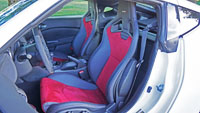
In comparison the Z’s main infotainment touchscreen is mind-blowingly advanced, but of course it’s rather dated compared to most anything else currently on the market. Navigation, Bluetooth phone connectivity, and other function are included, but its graphics are yesteryear, processing speed lethargic, and display resolution quality only slightly more up-to-date than the car itself. It all works well enough, nonetheless, so if you can live with merely adequate electronics, or don’t mind swapping them out for an aftermarket alternative, they’ll do fine.
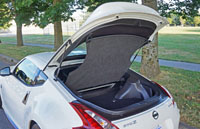
Of course, this being a two-seat sports coupe, the 370Z isn’t big on cargo capacity either. You can stuff enough bags for a weekend getaway for sure, but the 195 litres (6.9 cu ft) on hand won’t allow for much more. Again, compromises are always required when opting for such a track-ready sports car, so consider this a simple reminder.
On the positive, Nissan is currently offering up to $1,000 in additional incentives on the 2020 370Z, so make sure to check out our 2020 Nissan 370Z Coupe Canada Prices page for more. On that note, a CarCostCanada membership also provides information on available manufacturer rebates, manufacturer leasing and financing deal info, and last but hardly least, dealer invoice pricing that could save you thousands. Learn how the CarCostCanada system works, and remember to download our free app from the Google Play Store or Apple Store so you can have all of this critical information with you when haggling over your next vehicle purchase.
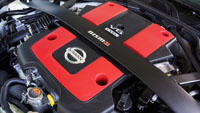
In summary, you can get into a new 2020 370Z for less than $30,000, and while not as fancy or powerful as this Nismo variant, it comes reasonably close and you won’t lose as much when driving off the lot. Either way you’ll get a fantastic performance car with a reasonably refined interior, just not a very modern one. If you’re fine with that, it’s hard to beat the base 370Z’s starting price.
Review and photos: Trevor Hofmann




